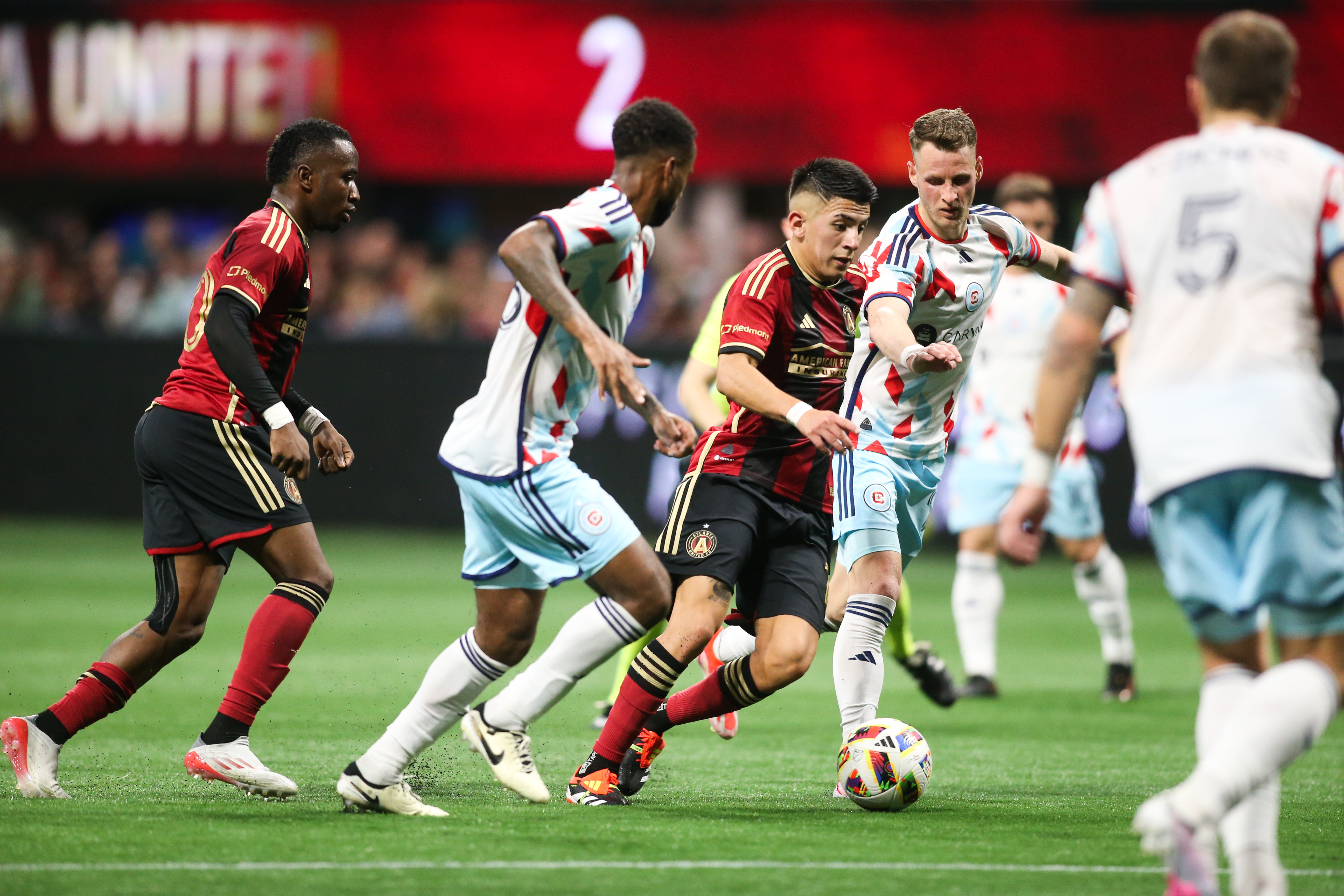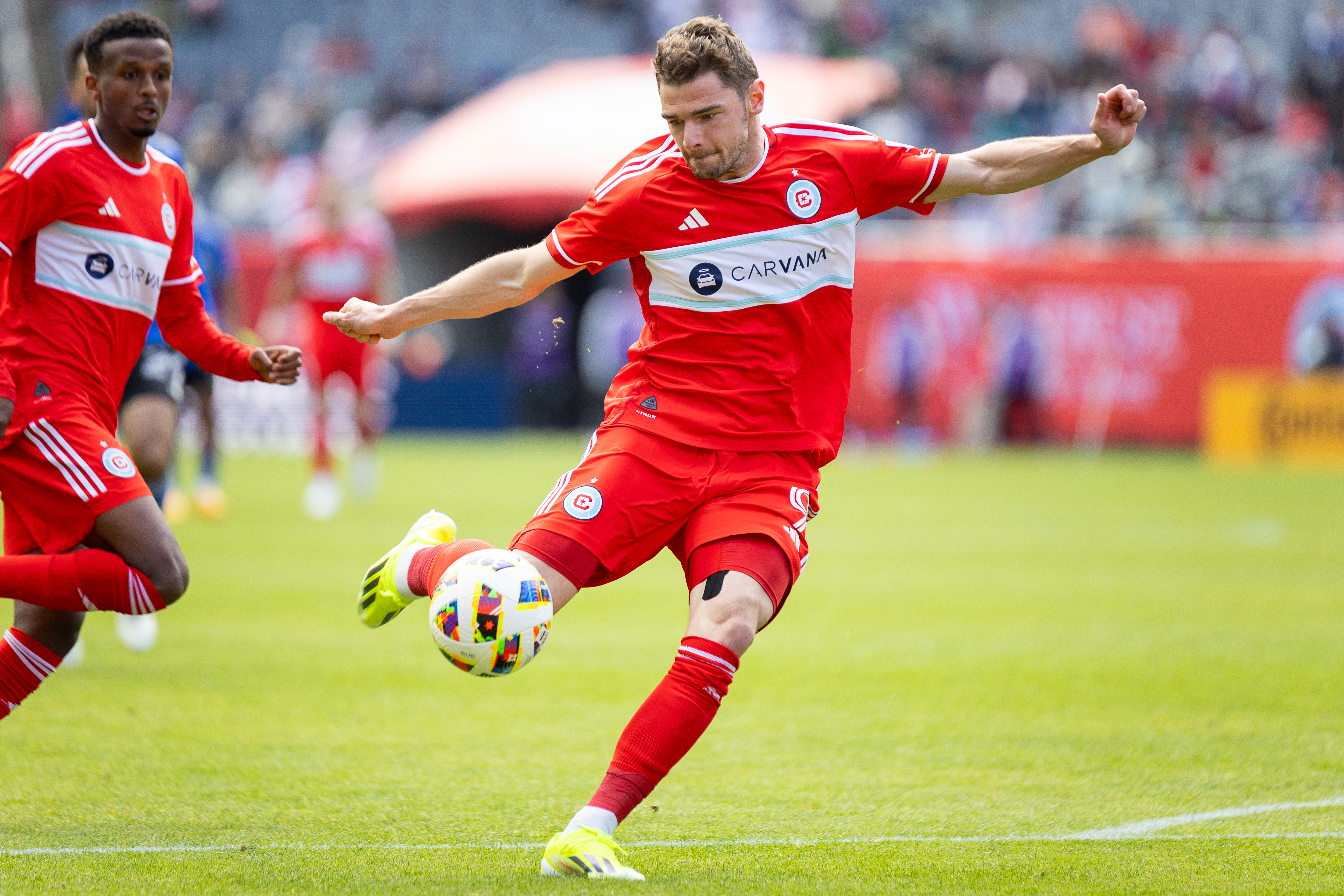Saturday's Fire-Red Bulls contest won't win any awards for entertainment or aesthestic quality. Neither team completed passes at a high rate nor was able to pepper the opposing goal.
So when the match finished a 1-1 draw it was probably a fair result. Neither attack can feel like it created a ton of chances nor was really threatening to the opposition and neither defense can come away feeling great after failing to come up with a clean sheet. The Fire completed 66 percent of passes while the Red Bulls came in just slightly better at 72 percent. Both of those are well below a satisfactory rate for two teams which put effort into controlling possession.
Performance aside, coach Veljko Paunovic and his players said they were happy to get a point at home against a team below them in the standings. Here's a look at that, along with the Red Bulls' dominant start.
Red Bulls owned the first 10 minutes
Bradley Wright-Phillips' goal in the seventh minute came soon after a corner kick and the way the opening minutes were going, it seemed to be coming. The Fire couldn't keep the ball out of the defensive half for the first 10 minutes.
In the seven minutes before the Red Bulls goal, the Fire completed more than two passes in a row on one occasion, all of which were in the defensive half. The Fire completed 16 of 33 passes in the first 10 minutes.
Whether the Fire was surprised by the Red Bulls' pressure, which shouldn't have happened, or was simply just slow out of the gate, it proved costly. The Red Bulls managed to close down passing lanes and had a huge territorial advantage in the opening part of the match.
Chicago Fire
New York came out in an unsual formation, which was tough to get a read on. There is a lot of fluidity in Jesse Marsch's system and to try to explain what they were doing would be beyond my knowledge of soccer tactics. I asked Frank Klopas about it when I saw him at halftime in the press box and he said it was basically a 5-4-1, but it shifted depending on what the wing backs were doing.
Either way, the Red Bulls caught the Fire off guard from the start.
Then the Fire improved
After Wright-Phillips' goal, the Red Bulls didn't have another shot the rest of the half. The Fire's first shot didn't come until 25 minutes into the game, but the improvement was evident.
The problem was the only shot that came close was a Michael de Leeuw effort which looked like it was going off target until getting deflected by a defender and hitting the crossbar. It was a good show of skill from de Leeuw, but that was pretty much it for the first half.
The Fire picked up the pressure in the second half and that led to the goal, which also came from an impressive show of skill from de Leeuw on the assist.
But what about those last 20 minutes?
After the game, Paunovic said the Fire had the better of the chances and were pushing for the win. The first part was definitely true on the whole. The shot total favored the Fire 14-5.
“I think as I remember we had more opportunities in this game, as I can remember it," Paunovic said during his fiery postgame press conference. "I think we were the team that was pushing hard to get that tie and then we were still pushing to win the game."
The pushing for the win part didn't show up on the field. With neither team playing particularly well, neither one put another shot on goal in the final 20 minutes. In fact, the Red Bulls didn't have another shot on target after scoring in the seventh minute.
However, a simple look at the passing charts for both teams show where the ball was (the Fire's defensive third) and where it wasn't (the Red Bulls' defensive third). Here's the Fire's passing chart for the final 20 minutes (attacking from bottom to top, green passes are completed, yellow passes led to shots and red passes were not completed):
Note the lack of passes in and near the box and the lack of completed passes beyond midfield. Now look at the Red Bulls' passing chart for the final 20 minutes:
The obvious relative density of passes shows the territorial advantage the Red Bulls had down the stretch. So no, the Fire did not push for the win. That's not to say the team was necessarily playing for the draw, but New York was certainly the aggressor late.
There are practical reasons why the Fire said they were happy with the draw. The Fire didn't allow the Red Bulls to gain ground in the standings and remained four points ahead of New York, although the Red Bulls have a game in hand. The Fire's closing schedule includes just two playoff teams out of the final six matches so this could have been a case of trying to fight another day. Is that good enough though?
However, this isn't what Paunovic has been preaching since he took over. Paunovic talks about trying to control and win every game, even on the road. That's why it was jarring to see him and the team not only satisfied with the home draw, but "happy with it" as de Leeuw said after the game.




